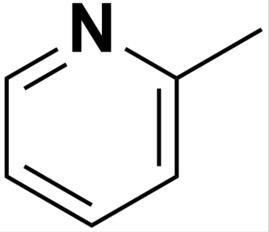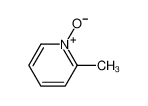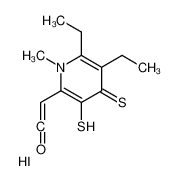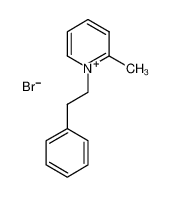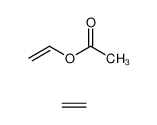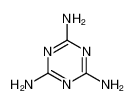| Product name | 2-methylpyridine |
|---|
| Product number | - |
|---|---|
| Other names | 2-Methylpyridine |
| Identified uses | For industry use only. Food additives -> Flavoring Agents |
|---|---|
| Uses advised against | no data available |
| Company | MOLBASE (Shanghai) Biotechnology Co., Ltd. |
|---|---|
| Address | Floor 4 & 5, Building 12, No. 1001 North Qinzhou Road, Xuhui District, Shanghai, China |
| Telephone | +86(21)64956998 |
| Fax | +86(21)54365166 |
| Emergency phone number | +86-400-6021-666 |
|---|---|
| Service hours | Monday to Friday, 9am-5pm (Standard time zone: UTC/GMT +8 hours). |
Flammable liquids, Category 3
Acute toxicity - Oral, Category 4
Acute toxicity - Dermal, Category 4
Eye irritation, Category 2
Acute toxicity - Inhalation, Category 4
Specific target organ toxicity – single exposure, Category 3
2.2 GHS label elements, including precautionary statements| Pictogram(s) | 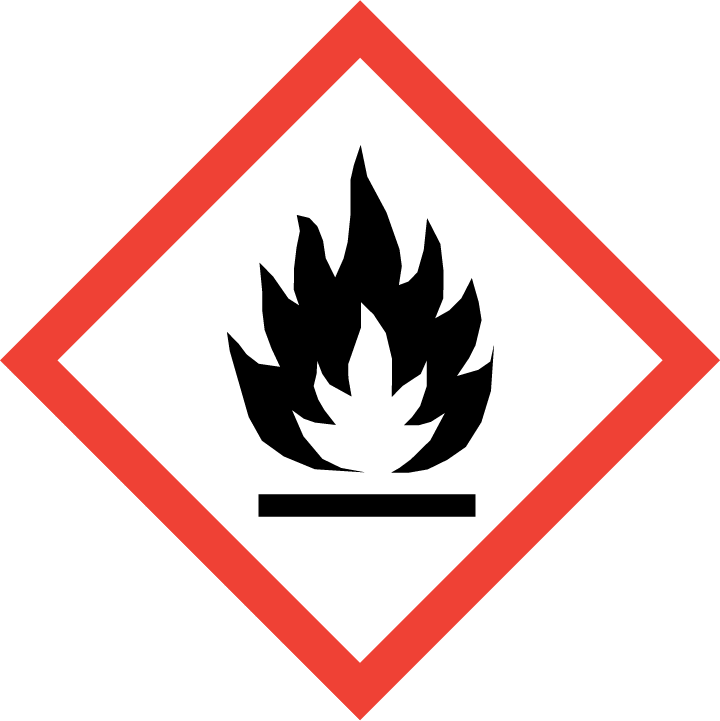 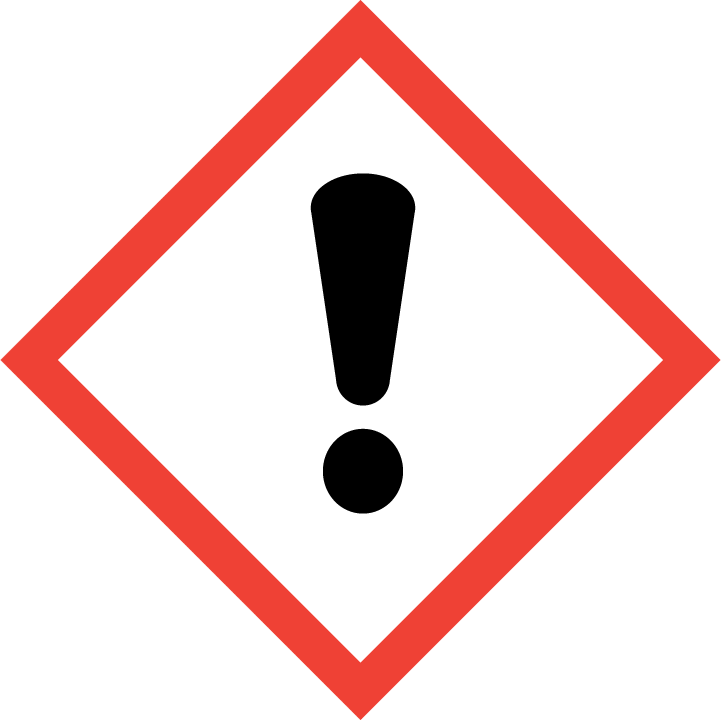 |
|---|---|
| Signal word | Warning |
| Hazard statement(s) | H226 Flammable liquid and vapour H302 Harmful if swallowed H312 Harmful in contact with skin H319 Causes serious eye irritation H332 Harmful if inhaled H335 May cause respiratory irritation |
| Precautionary statement(s) | |
| Prevention | P210 Keep away from heat, hot surfaces, sparks, open flames and other ignition sources. No smoking. P233 Keep container tightly closed. P240 Ground and bond container and receiving equipment. P241 Use explosion-proof [electrical/ventilating/lighting/...] equipment. P242 Use non-sparking tools. P243 Take action to prevent static discharges. P280 Wear protective gloves/protective clothing/eye protection/face protection. P264 Wash ... thoroughly after handling. P270 Do not eat, drink or smoke when using this product. P261 Avoid breathing dust/fume/gas/mist/vapours/spray. P271 Use only outdoors or in a well-ventilated area. |
| Response | P303+P361+P353 IF ON SKIN (or hair): Take off immediately all contaminated clothing. Rinse skin with water [or shower]. P370+P378 In case of fire: Use ... to extinguish. P301+P312 IF SWALLOWED: Call a POISON CENTER/doctor/…if you feel unwell. P330 Rinse mouth. P302+P352 IF ON SKIN: Wash with plenty of water/... P312 Call a POISON CENTER/doctor/…if you feel unwell. P321 Specific treatment (see ... on this label). P362+P364 Take off contaminated clothing and wash it before reuse. P305+P351+P338 IF IN EYES: Rinse cautiously with water for several minutes. Remove contact lenses, if present and easy to do. Continue rinsing. P337+P313 If eye irritation persists: Get medical advice/attention. P304+P340 IF INHALED: Remove person to fresh air and keep comfortable for breathing. |
| Storage | P403+P235 Store in a well-ventilated place. Keep cool. P403+P233 Store in a well-ventilated place. Keep container tightly closed. P405 Store locked up. |
| Disposal | P501 Dispose of contents/container to ... |
none
3.Composition/information on ingredients 3.1 Substances| Chemical name | Common names and synonyms | CAS number | EC number | Concentration |
|---|---|---|---|---|
| 2-methylpyridine | 2-methylpyridine | 109-06-8 | none | 100% |
Consult a physician. Show this safety data sheet to the doctor in attendance.
If inhaledFresh air, rest. Refer for medical attention.
In case of skin contactRemove contaminated clothes. Rinse skin with plenty of water or shower. Refer for medical attention .
In case of eye contactFirst rinse with plenty of water for several minutes (remove contact lenses if easily possible), then refer for medical attention.
If swallowedRinse mouth. Do NOT induce vomiting. Refer for medical attention .
4.2 Most important symptoms/effects, acute and delayedINHALATION, INGESTION OR SKIN ABSORPTION: Narcosis, headache, nausea, giddiness, vomiting. EYES: Severe irritation. SKIN: Causes burns. INGESTION: Irritation and gastric upset. (USCG, 1999)
4.3 Indication of immediate medical attention and special treatment needed, if necessary/SRP:/ Immediate first aid: Ensure that adequate decontamination has been carried out. If patient is not breathing, start artificial respiration, preferably with a demand-valve resuscitator, bag-valve-mask device, or pocket mask, as trained. Perform CPR as necessary. Immediately flush contaminated eyes with gently flowing water. Do not induce vomiting. If vomiting occurs, lean patient forward or place on left side (head-down position, if possible) to maintain an open airway and prevent aspiration. Keep patient quiet and maintain normal body temperature. Obtain medical attention. /Aromatic hydrocarbons and related compounds/
5.Fire-fighting measures 5.1 Extinguishing media Suitable extinguishing mediaTo fight fire, use carbon dioxide, dry chemical.
5.2 Specific hazards arising from the chemicalSpecial Hazards of Combustion Products: When heated to decompo- sition, emits toxic fumes of cyanide. Behavior in Fire: Heat may cause pressure buildup in closed containers. Use water to keep container cool. (USCG, 1999)
5.3 Special protective actions for fire-fightersWear self-contained breathing apparatus for firefighting if necessary.
6.Accidental release measures 6.1 Personal precautions, protective equipment and emergency proceduresUse personal protective equipment. Avoid dust formation. Avoid breathing vapours, mist or gas. Ensure adequate ventilation. Evacuate personnel to safe areas. Avoid breathing dust. For personal protection see section 8.
6.2 Environmental precautionsCollect leaking and spilled liquid in sealable containers as far as possible. Absorb remaining liquid in sand or inert absorbent. Then store and dispose of according to local regulations. Personal protection: chemical protection suit including self-contained breathing apparatus.
6.3 Methods and materials for containment and cleaning upPick up and arrange disposal. Sweep up and shovel. Keep in suitable, closed containers for disposal.
7.Handling and storage 7.1 Precautions for safe handlingAvoid contact with skin and eyes. Avoid formation of dust and aerosols. Avoid exposure - obtain special instructions before use.Provide appropriate exhaust ventilation at places where dust is formed. For precautions see section 2.2.
7.2 Conditions for safe storage, including any incompatibilitiesFireproof. Separated from oxidants.
8.Exposure controls/personal protection 8.1 Control parameters Occupational Exposure limit valuesno data available
Biological limit valuesno data available
8.2 Appropriate engineering controlsHandle in accordance with good industrial hygiene and safety practice. Wash hands before breaks and at the end of workday.
8.3 Individual protection measures, such as personal protective equipment (PPE) Eye/face protectionSafety glasses with side-shields conforming to EN166. Use equipment for eye protection tested and approved under appropriate government standards such as NIOSH (US) or EN 166(EU).
Skin protectionWear impervious clothing. The type of protective equipment must be selected according to the concentration and amount of the dangerous substance at the specific workplace. Handle with gloves. Gloves must be inspected prior to use. Use proper glove removal technique(without touching glove's outer surface) to avoid skin contact with this product. Dispose of contaminated gloves after use in accordance with applicable laws and good laboratory practices. Wash and dry hands. The selected protective gloves have to satisfy the specifications of EU Directive 89/686/EEC and the standard EN 374 derived from it.
Respiratory protectionWear dust mask when handling large quantities.
Thermal hazardsno data available
9.Physical and chemical properties| Physical state | colourless to yellow liquid with an unpleasant smell |
|---|---|
| Colour | Colorless liquid |
| Odour | Strong unpleasant odor |
| Melting point/ freezing point | 50°C(lit.) |
| Boiling point or initial boiling point and boiling range | 128-129°C(lit.) |
| Flammability | Flammable. Gives off irritating or toxic fumes (or gases) in a fire. |
| Lower and upper explosion limit / flammability limit | no data available |
| Flash point | 29°C |
| Auto-ignition temperature | 535°C |
| Decomposition temperature | no data available |
| pH | /SRP/: Weak base |
| Kinematic viscosity | no data available |
| Solubility | In water:MISCIBLE |
| Partition coefficient n-octanol/water (log value) | log Kow = 1.11 |
| Vapour pressure | 10 mm Hg ( 24.4 °C) |
| Density and/or relative density | 0.943g/mLat 25°C(lit.) |
| Relative vapour density | 3.2 (vs air) |
| Particle characteristics | no data available |
no data available
10.2 Chemical stability2-Methylpyridine is highly stable in aqueous solns ... .
10.3 Possibility of hazardous reactionsModerate fire risk2-METHYLPYRIDINE is hygroscopic. This compound reacts with hydrogen peroxide, iron(II) sulfate, sulfuric acid, oxidizing agents, acids, and metals.
10.4 Conditions to avoidno data available
10.5 Incompatible materialsMixtures with hydrogen peroxide + iron(II)sulfate + sulfuric acid may ignite & then explode.
10.6 Hazardous decomposition productsWhen heated to decomp, emits toxic fumes of /nitrogen oxides. /
11.Toxicological information Acute toxicity- Oral: LD50 Rat oral 790 mg/kg
- Inhalation: no data available
- Dermal: no data available
no data available
Serious eye damage/irritationno data available
Respiratory or skin sensitizationno data available
Germ cell mutagenicityno data available
Carcinogenicityno data available
Reproductive toxicityno data available
STOT-single exposureno data available
STOT-repeated exposureno data available
Aspiration hazardno data available
12.Ecological information 12.1 Toxicity- Toxicity to fish: LC50; Species: Pimephales promelas (fathead minnow); Conditions: flow-through bioassay with measured concentrations, 25.6°C, dissolved oxygen 7.0 mg/L, hardness 46.0 mg/L CaCO3, alkalinity 309 mg/L CaCO3, and pH 7.88; Concentration: 897 mg/L for 96 hr (confidence limit not reliable)
- Toxicity to daphnia and other aquatic invertebrates: no data available
- Toxicity to algae: no data available
- Toxicity to microorganisms: no data available
AEROBIC: 2-Methylpyridine was reported as readily biodegradable in the MITI test(1). In an aerobic screening test using an enrichment culture obtained from soil as an inoculum, 100% degradation was obtained in 14 to 32 days(2). When this test was repeated under anaerobic conditions, degradation was much slower, requiring >97 days for complete biodegradation(2). Only 2.7% of the added 2-methylpyridine (initial concentration of 2 umoles/g) remained after 16 days following incubation in a silt loam soil(3). Complete biodegradation of 2-methylpyridine, initially added at 4 mg/L, was reported in aerobic groundwater incubated at 15°C for 4 days(4). In an aerobic column study where subsurface sediment was leached with contaminated groundwater, 65% of the initially applied 2-methylpyridine was removed after 5 weeks of operation(5). Complete biodegradation of 2-methylpyridine was observed in 24 days following incubation in a defined medium inoculated with soil(6). Contaminated groundwater, from the American Creosote Works Superfund site in Pensacola, FL, was incubated with 2-methylpyridine; 33, 33, 33, 66, and 100% degradation was reported after incubation for 1, 3, 5, 8, and 14 days, respectively(7). 2-Methylpyridine, present at 100 mg/L, reached 0.1% of its theoretical BOD in 4 weeks using an activated sludge inoculum at 30 mg/L in the Japanese MITI test(8).
12.3 Bioaccumulative potentialAn estimated BCF of 3 was calculated for 2-methylpyridine(SRC), using a log Kow of 1.11(1) and a regression-derived equation(2). According to a classification scheme(3), this BCF suggests the potential for bioconcentration in aquatic organisms is low(SRC). Low bioconcentration was reported for tests using carp (Cyprinus carpio)(4); however, actual BCF values were not available(SRC).
12.4 Mobility in soilThe sorption behavior of 2-methylpyridine was studied in soil column tests using 5 Eurosoil reference soils having organic carbon content ranging from 0.33-1.85% and pH ranging from 5.2-8.6(1); measured Kd values ranging from 0.08 to 6.52(1) correspond to calculated Koc values of 4, 38, 70, 100 and 215(SRC); the lowest Koc value of 4 corresponds to Eurosoil 2 which had the highest pH value(8.6). The pKa of 2-methylpyridine is 5.96(2), indicating that this compound will exist partially in cation form in the environment and cations generally adsorb more strongly to soils containing organic carbon and clay than their neutral counterparts(3). In the Eurosoil column tests(1), lowest adsorption occurred when 2-methylpyridine was in non-ionized form(1). Sorption of 2-methylpyridine to soil is primarily controlled by cation exchange and surface complex formation(1,4). According to a classification scheme(5), the Koc values suggest that 2-methylpyridine is expected to have very high to moderate mobility in soil.
12.5 Other adverse effectsno data available
13.Disposal considerations 13.1 Disposal methods ProductThe material can be disposed of by removal to a licensed chemical destruction plant or by controlled incineration with flue gas scrubbing. Do not contaminate water, foodstuffs, feed or seed by storage or disposal. Do not discharge to sewer systems.
Contaminated packagingContainers can be triply rinsed (or equivalent) and offered for recycling or reconditioning. Alternatively, the packaging can be punctured to make it unusable for other purposes and then be disposed of in a sanitary landfill. Controlled incineration with flue gas scrubbing is possible for combustible packaging materials.
14.Transport information 14.1 UN Number| ADR/RID: UN2313 | IMDG: UN2313 | IATA: UN2313 |
| ADR/RID: PICOLINES |
| IMDG: PICOLINES |
| IATA: PICOLINES |
| ADR/RID: 3 | IMDG: 3 | IATA: 3 |
| ADR/RID: III | IMDG: III | IATA: III |
| ADR/RID: no | IMDG: no | IATA: no |
no data available
14.7 Transport in bulk according to Annex II of MARPOL 73/78 and the IBC Codeno data available
15.Regulatory information 15.1 Safety, health and environmental regulations specific for the product in question| Chemical name | Common names and synonyms | CAS number | EC number |
|---|---|---|---|
| 2-methylpyridine | 2-methylpyridine | 109-06-8 | none |
| European Inventory of Existing Commercial Chemical Substances (EINECS) | Listed. | ||
| EC Inventory | Listed. | ||
| United States Toxic Substances Control Act (TSCA) Inventory | Listed. | ||
| China Catalog of Hazardous chemicals 2015 | Listed. | ||
| New Zealand Inventory of Chemicals (NZIoC) | Listed. | ||
| Philippines Inventory of Chemicals and Chemical Substances (PICCS) | Listed. | ||
| Vietnam National Chemical Inventory | Not Listed. | ||
| Chinese Chemical Inventory of Existing Chemical Substances (China IECSC) | Listed. | ||
| Creation Date | Aug 10, 2017 |
|---|---|
| Revision Date | Aug 10, 2017 |
- CAS: Chemical Abstracts Service
- ADR: European Agreement concerning the International Carriage of Dangerous Goods by Road
- RID: Regulation concerning the International Carriage of Dangerous Goods by Rail
- IMDG: International Maritime Dangerous Goods
- IATA: International Air Transportation Association
- TWA: Time Weighted Average
- STEL: Short term exposure limit
- LC50: Lethal Concentration 50%
- LD50: Lethal Dose 50%
- EC50: Effective Concentration 50%
- IPCS - The International Chemical Safety Cards (ICSC), website: http://www.ilo.org/dyn/icsc/showcard.home
- HSDB - Hazardous Substances Data Bank, website: https://toxnet.nlm.nih.gov/newtoxnet/hsdb.htm
- IARC - International Agency for Research on Cancer, website: http://www.iarc.fr/
- eChemPortal - The Global Portal to Information on Chemical Substances by OECD, website: http://www.echemportal.org/echemportal/index?pageID=0&request_locale=en
- CAMEO Chemicals, website: http://cameochemicals.noaa.gov/search/simple
- ChemIDplus, website: http://chem.sis.nlm.nih.gov/chemidplus/chemidlite.jsp
- ERG - Emergency Response Guidebook by U.S. Department of Transportation, website: http://www.phmsa.dot.gov/hazmat/library/erg
- Germany GESTIS-database on hazard substance, website: http://www.dguv.de/ifa/gestis/gestis-stoffdatenbank/index-2.jsp
- ECHA - European Chemicals Agency, website: https://echa.europa.eu/






